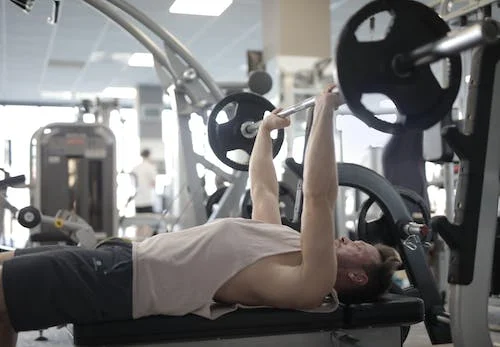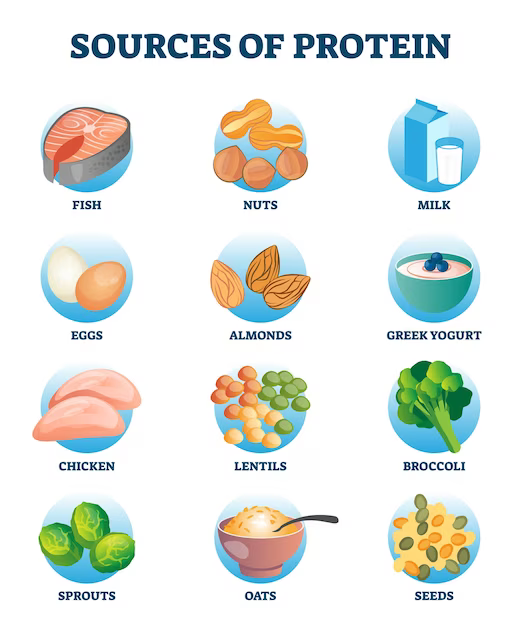Bench Press vs Chest Press: Which is Better for Building a Strong Chest?
When it comes to building a strong and well-developed chest, two popular exercises often come to mind: the bench press and the chest press. Both of these exercises target the chest muscles and are effective in building strength and muscle mass. However, there are some key differences between the two that may influence your choice of exercise. In this article, we will compare the bench press and the chest press, examining their differences, benefits, and when to perform each exercise.
What’s the Difference Between Bench Press and Chest Press?
The fundamental difference between the bench press and the chest press lies in the equipment used and the range of motion. The bench press is performed using free weights, such as a barbell or dumbbells, while the chest press is performed on a fixed resistance machine (FRM) that follows a predetermined movement path. This difference in equipment leads to variations in the amount of weight that can be used. The bench press allows for unlimited weight progression, while the chest press is limited by the weight stack of the machine.
Another key difference is the position in which the exercises are performed. The bench press is done lying flat on a bench, pressing the weights up above the chest. On the other hand, the chest press is typically performed in a seated position, pressing handles out in front of the body. These variations in equipment and positioning can influence the muscles targeted and the overall effectiveness of the exercises.
Muscles Used in Bench Press and Chest Press
Both the bench press and the chest press primarily target the pectoralis major, which is the main muscle of the chest. The exercises also engage the pectoralis minor and the anterior deltoid, which is the front part of the shoulder. In addition, the triceps brachii and the serratus anterior play secondary roles in both exercises.
However, the bench press also stimulates smaller stabilizing muscles such as the medial and posterior deltoid, latissimus dorsi, biceps brachii, and core muscles. These muscles work together to provide stability and control during the exercise. In contrast, the chest press, being a machine-based exercise, relies less on stabilizing muscles and focuses more on isolating the chest muscles.
Benefits of the Bench Press
The bench press has gained immense popularity in the fitness world for its ability to build upper body strength and muscle mass. It is considered a compound movement, meaning it engages multiple muscle groups simultaneously. Here are some of the key benefits of the bench press:
- Chest Development: The bench press is widely regarded as one of the most effective exercises for developing the chest muscles. It targets the pectoralis major, helping to build a strong and well-defined chest.
- Upper Body Strength: The bench press is a true test of upper body strength. It not only targets the chest but also engages the shoulders and triceps, resulting in overall upper body strength gains.
- Versatility: The bench press can be performed using various grips and angles, allowing for targeted muscle stimulation and variations in the exercise.
- Functional Movement: As a compound exercise, the bench press mimics pushing movements commonly encountered in daily activities and sports. It improves intramuscular coordination, bone density, and range of motion.
- Power Development: Performing the bench press explosively can help develop muscular power and upper-body explosive energy.
How to Perform the Bench Press Properly
To perform the bench press correctly and maximize its benefits, follow these steps:
- Set Up: Lie on a flat bench with your feet firmly planted on the ground. Position the barbell at eye level, gripping it slightly wider than shoulder-width apart.
- Brace and Arch: Brace your core and puff out your chest. Arch your lower back slightly and bring your shoulder blades together, creating a stable base.
- Unrack the Bar: Unrack the barbell and slowly lower it towards your chest, keeping your elbows slightly tucked in. Lower the bar until it touches your chest or hovers just above it.
- Press Up: Press the barbell back up by extending your arms and contracting your chest muscles. Focus on pushing through your chest and maintaining proper form.
- Repeat: Complete the desired number of repetitions, maintaining control and proper technique throughout the set.
Benefits of the Chest Press
The chest press, also known as the machine press or seated chest press, offers several benefits that make it a popular choice for chest training. Here are some of the key advantages of the chest press:
- Simplicity and Safety: The chest press is a simpler movement compared to the bench press, making it easier to learn and perform with proper form. The fixed movement path of the machine reduces the risk of injury caused by poor technique.
- Isolation and Muscle Focus: The chest press isolates the chest muscles to a greater extent than the bench press, making it ideal for individuals focused on building their chest. It allows for targeted muscle stimulation without involving stabilizing muscles.
- Variety of Techniques: The chest press machine allows for advanced training techniques such as drop-sets, super-sets, and rest-pause sets. These techniques can be easily implemented using the pin-loaded machine, adding variety and intensity to your workouts.
- Unilateral Training: The chest press machine allows for unilateral training, meaning you can work one side of your chest at a time. This can help correct or prevent muscle imbalances and improve overall symmetry.
- Accessible and Beginner-Friendly: Most gyms have a chest press machine available, making it easily accessible for beginners. Instructions on how to perform the exercise properly are often provided, ensuring proper form and safety.
How to Perform the Chest Press Properly
To perform the chest press on a machine, follow these steps:
- Set Up: Adjust the seat height so that your mid-chest is in line with the handles. Sit with your back flat against the pad and your feet flat on the floor.
- Grip and Position: Grip the handles with your knuckles facing forward and your palms facing inward. Push the handles forward by extending your arms out, making sure to stop before you lock out your elbows.
- Controlled Movement: Return to the starting position with control, allowing the weight to move smoothly and evenly. Avoid jerking or using momentum to perform the exercise.
- Repeat: Complete the desired number of repetitions, maintaining proper form and control throughout the set.
Which Exercise Should You Choose?
The choice between the bench press and the chest press ultimately depends on your goals, experience level, and personal preferences. Here are some factors to consider when deciding which exercise to incorporate into your chest workout routine:
- Strength vs. Muscle Development: If your primary goal is to build upper body strength and you have no shoulder injuries or instabilities, the bench press is the preferred choice. It allows for greater weight progression and engages a wider range of muscles, leading to overall strength gains.
- Safety and Simplicity: If you are a beginner or recovering from an injury, the chest press may be a safer and more suitable option. It offers a simpler movement pattern and reduces the risk of injury caused by poor form or excessive weight.
- Isolation and Muscle Focus: If your main focus is building a well-defined chest and you want to isolate the chest muscles to a greater extent, the chest press can be a valuable addition to your routine. It allows for targeted muscle stimulation and advanced training techniques.
- Time Efficiency and Accessibility: If you have limited time for your workouts or prefer a machine-based exercise, the chest press may be more convenient. It requires less setup time and is easily accessible in most gyms.
Incorporating Both Exercises in Your Chest Workout
Instead of choosing between the bench press and the chest press, consider incorporating both exercises into your chest workout routine. By doing so, you can reap the benefits of both exercises and target your chest muscles from different angles. Here’s a suggested approach:
- Start with the Bench Press: Begin your chest workout with the bench press as your primary compound movement. This allows you to utilize maximum energy and strength for the exercise. Perform the bench press with proper form and focus on building strength and muscle mass.
- Follow with the Chest Press: After completing the bench press, move on to the chest press to further target and isolate the chest muscles. The chest press can be performed using advanced techniques such as drop-sets or rest-pause sets to enhance muscle growth and intensity.
- Combine with Cable Chest Exercises: To maximize your chest workout, incorporate cable chest exercises such as cable flys or cable crossovers. These exercises provide additional variety and stimulation to your chest muscles, complementing the bench press and chest press.
Conclusion
In the debate between the bench press and the chest press, both exercises have their merits and can be valuable additions to your chest workout routine. The bench press is effective for building upper body strength and overall muscle mass, while the chest press allows for targeted muscle stimulation and isolation of the chest muscles. By incorporating both exercises, you can achieve a well-rounded and balanced chest development. Remember to prioritize proper form, gradually increase weight, and listen to your body to ensure safe and effective workouts.





